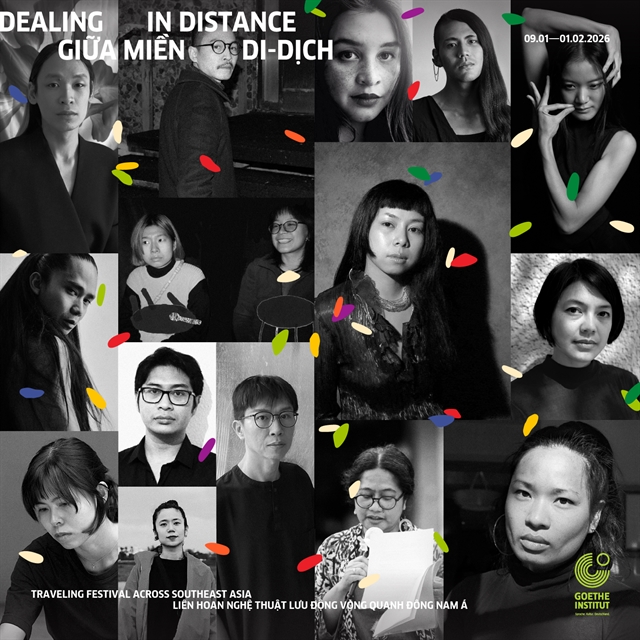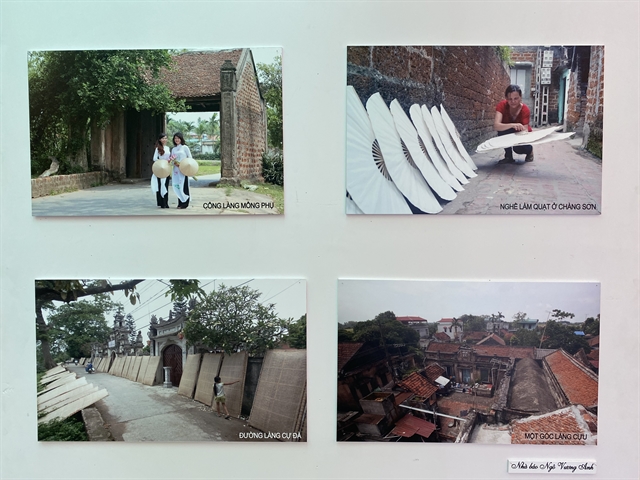 Life & Style
Life & Style

These villages are close to rivers creating a friendly environment between people and nature.

|
| The exhibition is displaying photos on old villages in the northern provinces of Bắc Giang, Hưng Yên, Nam Định; central province of Thừa Thiên Huế and Hà Nội. — Photo Nguyễn Bình |
HÀ NỘI — The Institute for Relics and Works of Preserving Monuments has put photos on the architecture of traditional Vietnamese villages on display at an exhibition in Hà Nội.
Kiến Trúc Làng Việt Truyền Thống (Architecture of Vietnamese Traditional Village) introduces six old villages including Thổ Hà in the northern province of Bắc Giang; Cự Đà in Hà Nội; Nôm in the northern province of Hưng Yên; Hành Thiện in the northern province of Nam Định and Phước Tích and An Chuyên in the central province of Thừa Thiên-Huế.
“Traditional Vietnamese villages are inherently a coherent structure of organisation and social governance,” said architect Hoàng Đạo Cương, director of the institute.
“Depending on the natural environment and society, each village has its own organisation contributing to the diversity and typical features of traditional Vietnamese villages.”
Thổ Hà Village is on the banks of the Cầu River, about 50km from Hà Nội. Different from other northern villages, Thổ Hà did not rely on rice cultivation but from pottery and the floating market on the river.
It used to be a famous place of gốm sành (pottery without glaze fired with dry grass and then firewood and coal).
Cự Đà Village in Thanh Oai District lies 20km from Hà Nội near the banks of the Nhuệ River.
Large houses built during the Lê Dynasty and 50 French-style villas from the 1920s give Cự Đà a reputation as a culturally rich and historic place.
Located about 40km south of Huế City, Phước Tích Village was founded in 1470 under King Lê Thánh Tông.
The village has unique cultural value systems such as the architecture of the temple and pagoda. It also preserves a typical Vietnamese community living space and culture.
These villages are close to rivers creating a friendly environment between people and nature.
The photos are the results of yearly research by the institute.
The exhibition also features detailed drawings, survey data on the architecture of the villages.
The six villages are introduced in the first volume of a book entitled Kiến Trúc Làng Cổ Việt Nam Qua Tư Liệu Viện Bảo Tồn Di Tích (Architecture of Vietnamese Traditional Village) which was released on August 9.
Currently, there are 3,500 national relics, including only four old villages, namely Thừa Thiên Huế’s Phước Tích; the southern province Tiền Giang’s Đông Hòa Hiệp; Hà Nội’s Đường Lâm and Quảng Nam Province’s Lộc Yên.
“These old villages in the book are very valuable in many aspects but they are disappearing,” said Cương, the book’s editor. “They are also threatened by the whirlwind of urbanisation.”
Cương hopes the book will help preserve traditional village heritage.
The exhibition runs until September 15 at the institute, 489 Nguyễn Trãi Road, Thanh Xuân District. — VNS